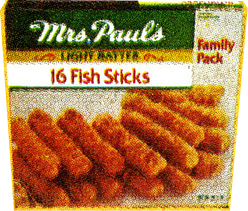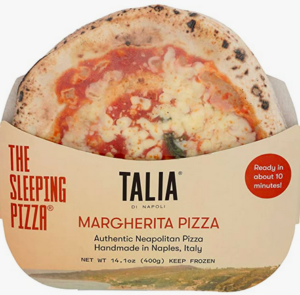 Sometimes one’s thoughts are so dry and barren that one has ceased to notice the fact. Then, like a brightly colored cactus fruit, an immensely silly thought appears. Look! There it is! At your feet! A capering clown of a question, viz., What’s the deal with fish sticks anyway? And your trek through the desert is ended! A light rain falls, and you are again a child, dancing in the heady delights of investigation and research. The following excerpt is pretty good by itself; to get the full article (see notes at bottom) you’d better have university or library access to JHU.
Sometimes one’s thoughts are so dry and barren that one has ceased to notice the fact. Then, like a brightly colored cactus fruit, an immensely silly thought appears. Look! There it is! At your feet! A capering clown of a question, viz., What’s the deal with fish sticks anyway? And your trek through the desert is ended! A light rain falls, and you are again a child, dancing in the heady delights of investigation and research. The following excerpt is pretty good by itself; to get the full article (see notes at bottom) you’d better have university or library access to JHU.
The Ocean’s Hot Dog: The Development of the Fish Stick
Paul R. Josephson
In lieu of an abstract, here is a brief excerpt of the content:
“Der Mensch ist, was er isst.”
—Ludwig Feuerbach
The fish stick—the bane of schoolchildren who generally consider it an overcooked, bread-encrusted, cardboard-tasting, fish-less effort of lunchrooms and mothers to deceive them into consuming protein—is a postwar invention that came into existence as the confluence of several forces of modernity. These forces included a boom in housing construction that contained kitchens with such new appliances as freezers; the seeming appeal of space-age, ready-to-eat foods; the rise of consumer culture; and an increasingly affluent society. Yet the fish stick arose during the 1950s not because consumers cried out for it, and certainly not because schoolchildren demanded it, but because of the need to process and sell tons of fish that were harvested from the ocean, filleted, and frozen in huge, solid blocks. Consumers were not attracted by the form of these frozen fillets, however, and demand for fish products remained low. Manufacturers believed that the fish stick—a breaded, precooked food—would solve the problem. Still, several simultaneous technological advances had to take place before the product could appear.
These advances occurred in catching, freezing, processing, and transportation technologies. The postwar years witnessed a rapid increase in the size of merchant marines in many countries, with these merchant fleets adopting new, almost rapacious catching methods and simultaneously installing massive refrigeration and processing facilities onboard huge trawlers. Sailors caught, beheaded, skinned, gutted, filleted, and then plate- or block-froze large quantities of cod, pollock, haddock, and other fish—tens of thousands of pounds—and kept them from spoiling in huge freezing units. Once on shore, the subsequent attempt to separate whole pieces of fish from frozen blocks resulted in mangled, unappetizing chunks. Frozen blocks of fish required a series of processes to transform them into a saleable, palatable product. The fish stick came from fish blocks being band-sawed into rectangles roughly three inches long and one inch wide (~7.5 3 2.5 cm), then breaded and fried. Onboard processors eventually learned to trim fish into fillets and other useable cuts before freezing. Processors considered these other cuts the “portion,” which found a home in institutional kitchens (schools, hospitals, factories, and restaurants). Fish sticks had a largely retail success, however, because demand for them in schools and elsewhere waned as more manufacturers entered production and quality declined.
From: Technology and Culture / Volume 49, Number 1, January 2008 / pp. 41-61 | 10.1353/tech.2008.0023
http://muse.jhu.edu/journals/tech/summary/v049/49.1josephson.html

